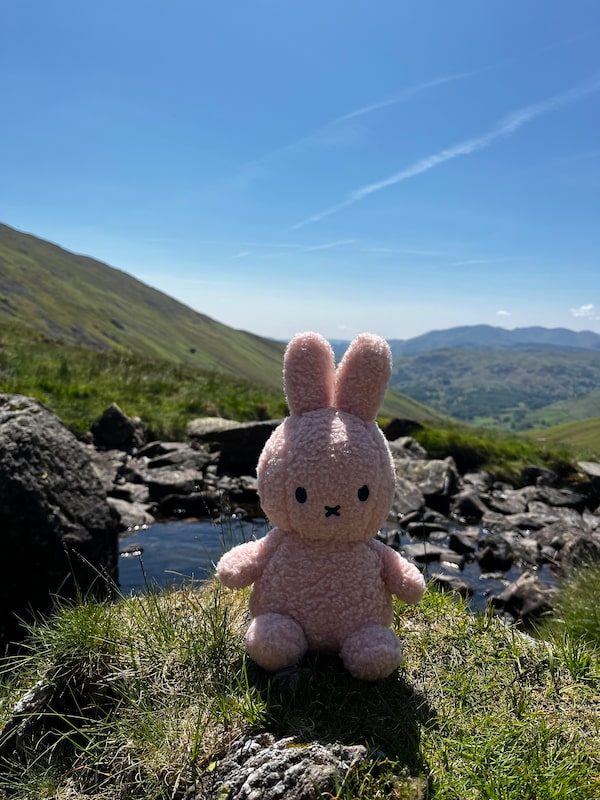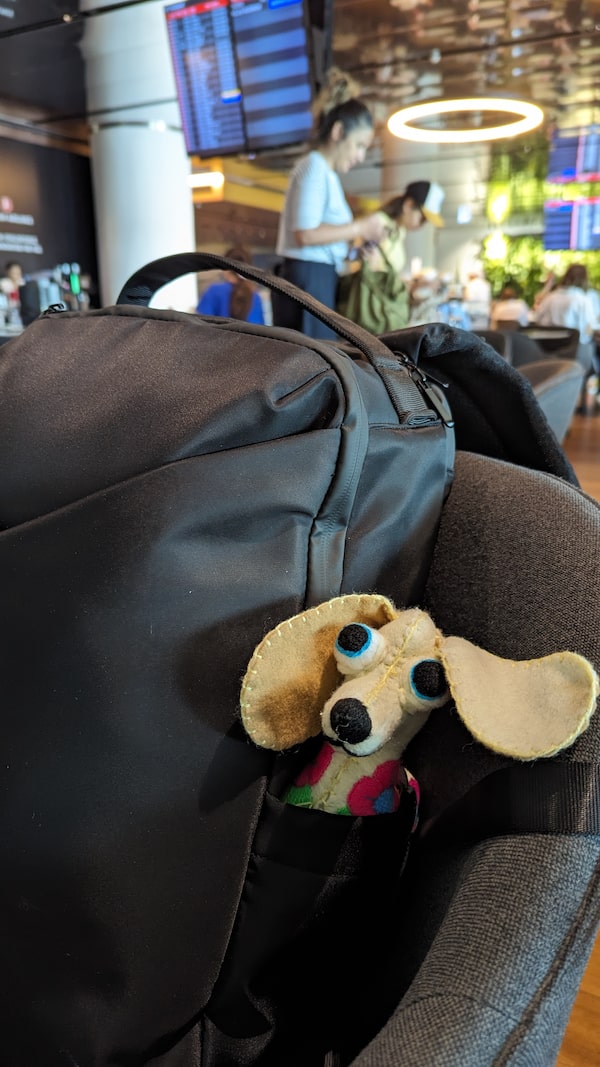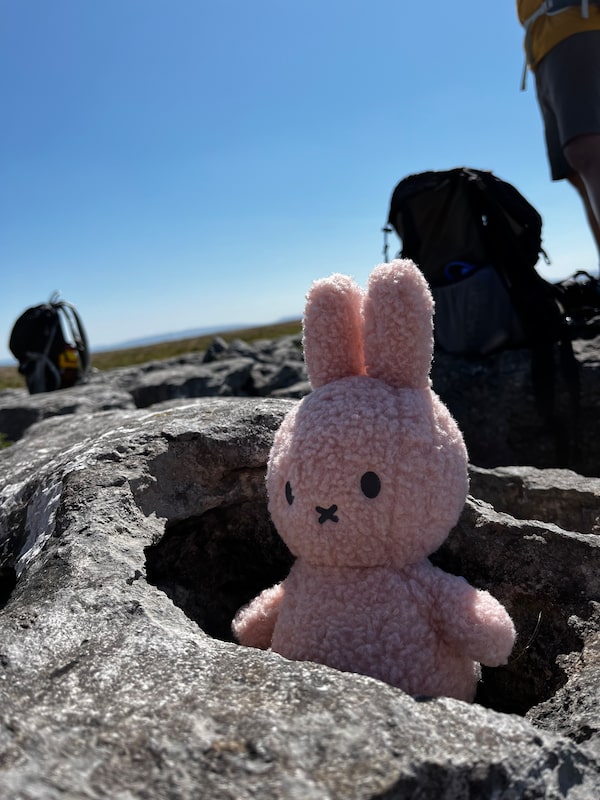For my hike across England on the country’s 17th and newest official national trail, the Coast to Coast route, I packed the items deemed essential for walking around 20 km each day in unpredictable North Country weather. The list from my tour company, Wilderness England, included rain pants, a rain jacket, a pair of gaiters, dry bags, a hydration bladder, a wool hat and gloves, and sunscreen. It did not include a stuffed pink rabbit called Miffy, but into the pack she went anyway.
Miffy, the fictional character created by Dutch artist Dick Bruna, has starred in children’s books since 1955, but my Miffy came from an airport gift shop, a 2022 impulse buy that I couldn’t quite rationalize but gave into nonetheless.
I’ve always loved stuffed toys. As a toddler, my working mother would buy me one every payday as a kind of compensation for leaving me with a sitter. My collection, commensurate with her guilt, was impressive. When my parents got divorced, I would carry one (or two) back and forth between their houses every other weekend even though, by that point, I was probably too old to be doing it.

Miffy, the fictional character created by Dutch artist Dick Bruna, has starred in children’s books since 1955, but my Miffy came from an airport gift shop, a 2022 impulse buy that I couldn’t quite rationalize but gave into nonetheless.Corrina Allen/The Globe and Mail
Now, in my 40s, I am definitely too old to be doing it. And yet here I was, snooping around Wordsworth’s cottage in Grasmere or scrambling up the staggeringly steep Loft Beck path in the Lake District with a stuffed toy in tow. Why? I didn’t have an immediate answer, but after polling fellow travellers, I found it’s quite common for people to take seemingly nonsensical items along for the journey.
A couple I spoke to travels with a stuffed grey mouse named Amanda. One woman told me she always takes along a small fluorite sphere as a kind of good luck charm or talisman. Another said her granddaughter used to send her off with one of her necklaces so that she’d travel with a little piece of her close to her heart.
A travel writer colleague of mine, Becca Blond, says that when she can’t travel with her support dog Poppy, she packs Papi, a small stuffed pup given to her by a friend.
“I live with really bad panic attacks and flying is one of my triggers,” she says. “If I feel anxious, I’ll take him out and pet his ears as a way to calm down. I consider him an emotional support stuffed animal, I suppose.”

Becca Blond’s stuffed dog Papi at the airport.Becca Blond/Supplied
Psychologists call these “transitional items” – an object that represents stability and predictability in unstable and unpredictable situations (an especially accurate description of travel in 2023). Often these are comfort items adopted by children but they’re also employed by adults – studies have shown that they’re valuable tools for military veterans and students away at college.
Transitions are a near-constant in our lives. “When you’re going through a transition, by definition, you’re changing contexts,” says Robin Roger, a registered psychotherapist in Toronto. “Travel is an obvious one. You’re going from your known context to an unknown context. That’s got an emotional weight to it. It’s got all sorts of cognitive challenges and sensory challenges.”
Labelling the objects a traveller might bring with them comfort items, explains Roger, is an understatement. “It’s really about adjusting.”
“The other lens to look at this is through evolutionary psychology,” she adds. “We evolved to travel the distance we could walk. Now the way in which we can travel is way beyond what we were evolved to do.” Flying is convenient but unnatural, a physical and psychological transition we weren’t designed for.
At this point in aviation history, we’re well out of the golden age of travel. Flying became more uncomfortable after 9/11 and then again since the COVID-19 pandemic. A prepandemic survey found that 55 per cent of travellers found air travel more stressful than going to the office. And that was before we had to worry about masking.
This is, says Roger, “travel in a time of the adverse travel experience. You can see why there might be heightened anxiety about travelling in today’s world, and that people would be more inclined to find ways to make themselves feel secure.”

I’ll always remember the experience of having Miffy with me on the hike.Corrina Allen/The Globe and Mail
I try to remind myself about all the things I love about travel every time I leave my Berlin flat with a long flight ahead of me and an extra dose of anxiety medication in my pocket: hotel beds, dramatic rural landscapes, navigating new cities and long chats with strangers. I love the creativity travel inspires and the alternative realities it makes known.
On the long, hard Coast to Coast trail hike across England from St. Bees Head to Robin Hood’s Bay, it was the windswept moors of North Yorkshire and the perfectly poured pint of Guinness I drank at the historic Lion Inn that I’ll never forget. Nor will I fail to recall the sunny Lake District, where hard climbs and steep descents cost me two toenails (repeat after me: trail shoes are not hiking boots).
And I’ll always remember the experience of having Miffy with me on the hike. I’d take her out at lunch and our group would debate which stunning backdrop she should be photographed against. I’d take her out at the pub and strangers would come over to ask about her. And every evening, back at the hotel, I’d take her out of my pack after a long hike, feet throbbing, and know that it was possible to be uncomfortable and content, both at the same time.